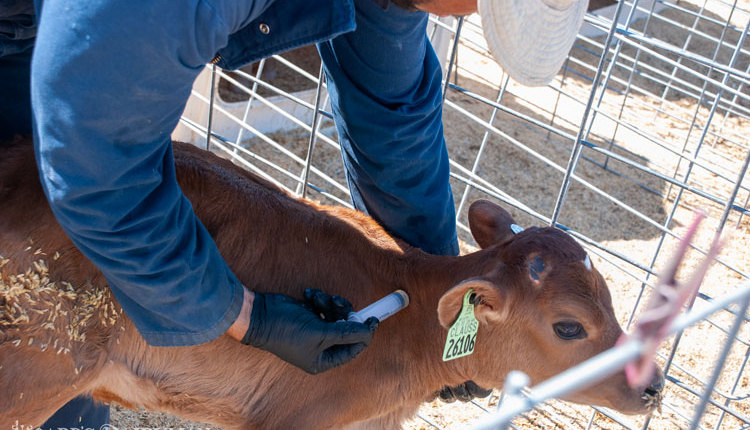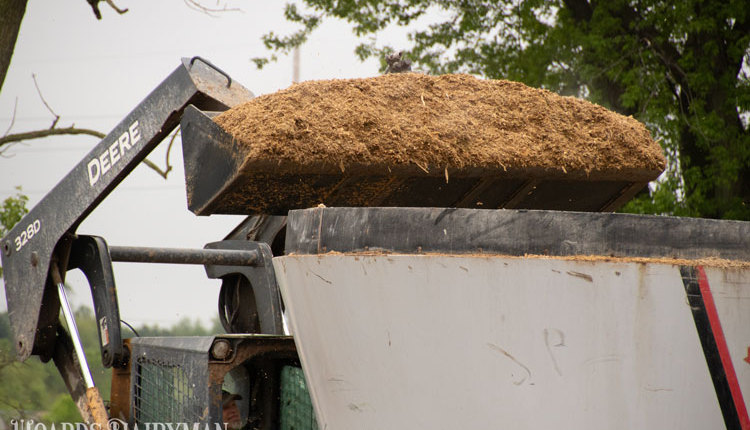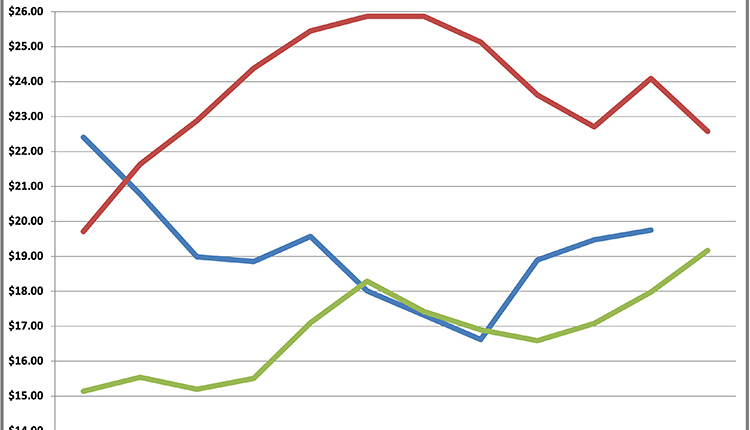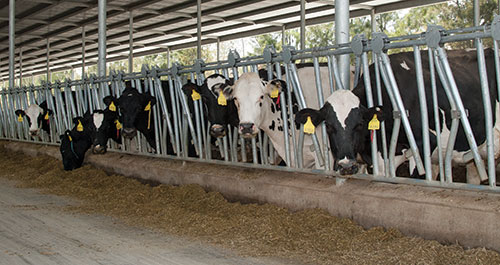
Mexico is a steak and eggs kind of country. That national food palate includes a strong serving of dairy, too.
On average, every one of Mexico's 122 million people eats one egg per day. That's tops in the world. Equally impressive is the citizenry's appetite for meat and dairy products.
However, modern-day Mexico has never been able to meet its demand for dairy. It has been estimated that the country imports 35 percent of its dairy products. Many of those imported dairy products come from the United States. Last year, the collective U.S. dairy sector exported $1.3 billion in dairy products south of the border. That made dairy products tied for first place with all food products. The relationship also makes the Spanish-speaking nation America’s best dairy customer. However, with the strengthening dollar and falling peso, New Zealand has been upping its imports of milk powder at the expense of the U.S. market share.
As all this has taken place, Mexican dairy farmers have struggled to eke out a profit. That’s partially because Mexico still lacks a standardized milk pricing structure. At the same time, Mexico also lacks a railway that connects the Gulf of Mexico to the Pacific Ocean. This makes it challenging to move goods throughout the country.
While larger dairy farms have established market channels to sell milk, midsized and smaller operations either need to work collectively through co-ops or simply rely on the government to buy their milk. On the production side of the equation, dairy farms represent the full spectrum.
Spotty electrical networks and limited water supplies also limit some advances on dairy farms in Jalisco, one of the country’s 31 states. Specifically in the case of water, those farms or residents with wells need to dig nearly 1,000 feet to obtain water. In nearby metropolitan Guadalajara, Mexico’s second-largest city and the capital of Jalisco, water is generally supplied for only two hours on a rotating schedule, forcing homeowners to have large water tanks to store the precious commodity. In some cases, dairy farms remain hungry for modern-day upgrades with some still hand milking cows.
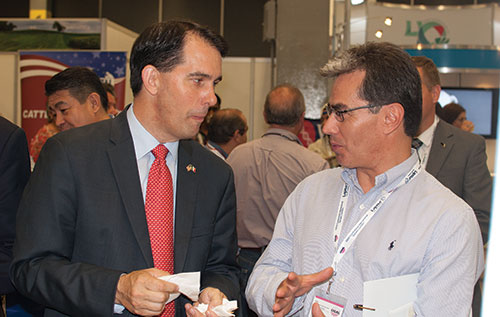
A Wisconsin-Jalisco partnership
On a June 2016 trade mission to Jalisco, Wisconsin’s delegation comprising of Governor Scott Walker, officials from the Department of Agriculture, Trade and Consumer Protection, the Wisconsin Economic Development Corporation, representatives from 11 dairy companies, and two educational institutions may have planted some seeds for positive synergies between America’s Dairyland and Mexico’s top dairy region. Together, the Wisconsin and Jalisco state governments reinvigorated the CIGAL Dairy Trade Show and strengthened their collective bonds initially formed as sister states in 1991. As for the CIGAL trade show, that event dates back to 1985.
“We have never had a bigger group from Wisconsin at this gathering,” said Governor Walker during the event’s opening session.
As part of the trade mission, Jalisco Governor Aristóteles Sandoval and his team met with Wisconsin officials. Similar meetings took place between Jalisco dairy farmers and Wisconsin’s delegation of individuals from dairy companies and education centers. The goal was to share information and improve dairy farming. This information exchange and relationship building took place during educational sessions and the trade show. As a result, potentially long-term partnerships took place on the commercial, education, and government level.
While Jalisco may be best known for agave and the tequila it eventually yields, the Mexican state is the country’s largest dairy region producing 20 percent of Mexico’s estimated 25 billion pounds of milk. For comparison’s sake, total U.S. milk production was 206 billion pounds for a population base of 327 million people.
Strengthening Mexican farms
The landscape is dotted with small to midsized dairy operations. Recently, a number of dairy co-ops also have sprung up to improve the dairy landscape. Not only do these co-ops help market milk, they have advanced cropping and feeding programs.
One such co-op is Prolea. Ramiro Ramîrez Sr. organized the dairy farmer-owned entity. He, too, is a dairyman milking 300 dairy cows.
Corn silage has been at the heart of improving dairy cow nutrition. These days the co-op assists its members by liming the heavy clay soils, helping install drip irrigation to conserve precious water, and it even owns a self-propelled forage harvester fitted with a kernel processor.
“Last year, we processed 30,000 metric tons of corn silage for our members,” said Ramîrez, talking about the co-op’s activity that includes some 200 dairy farmers. “Manure from the dairy cows also is a valuable resource to improve the region’s soil fertility.”
Another innovation led by this particular co-op has been a stepped-up focus on heifer raising. “Some of our members focus solely on raising calves and heifers,” commented Ramîrez through an interpreter. “The heifers remain the property of the dairy farmer and return to the owner near calving.”
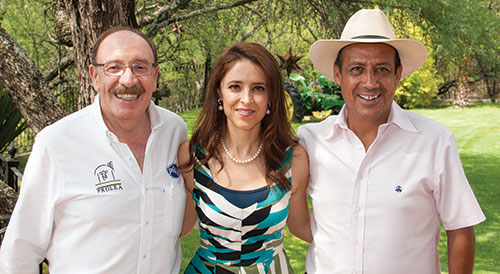
The Prolea cooperative, now run by son Ramiro Ramîrez Jr., also has a feed mill to process concentrate feed and grains for its members. In addition, it has processing facilities to manufacture yogurt and cheese, and the co-op has stepped up efforts to improve milk quality.
Knowing that they must improve dairy farmers’ bargaining power, a number of Jalisco dairy farmers now belong to dairy cooperatives.
“It’s a powerful tool,” said Ben Brancel, secretary of Wisconsin’s Department of Agriculture, Trade and Consumer Protection to the Mexican delegation of dairy farmers. “In Wisconsin, 88 percent of our state’s milk moves through dairy cooperatives.”
In Jalisco, the Union de Cooperatives de Consumo is a larger federation of 17 dairy co-ops that work collectively to champion dairy farmer causes. The Prolea Cooperative is one of the 17 members. This larger Mexican federation would be like the Cooperative Network that operates in Minnesota and Wisconsin on a regional level or the National Milk Producers Federation on the national level.
To help improve the region’s dairy farming, the Union de Cooperatives de Consumo works closely with the nearby Universidad de Guadalajara. The university’s director, Leticia Leal Moya, happened to take advanced studies in Wisconsin, as did Jesus Olmos, who earned his Ph.D. at the University of Wisconsin-Madison. On the flip side, the University of Wisconsin-Madison and the University of Wisconsin-River Falls have established educational outreach in Mexico so its students can learn more about the Mexican market and its importance for dairy products.
A committed relationship
Further proof that the ties between Wisconsin and Mexico are as strong as ever . . . Milwaukee, Wis., was chosen over Hawaii, Tennessee, and New Jersey as the newest location for a Mexican consulate. Last year alone, trade from Wisconsin to Mexico rose 4.6 percent, while goods and services from Mexico to Wisconsin grew 4.5 percent during the same window. In all, revenues totaled some $3 billion for Wisconsin. Of that, agricultural products were the leading export.
A state-sponsored trade mission typically would not get off the ground due to limited resources, including people. However, an initiative led by Brancel changed all that a few years back. The newly developed International Agribusiness Center now has a staff of six and has been connecting Wisconsin businesses with the world. This includes bureau director Jen Pino-Gallagher who helped lead this trade mission as did livestock and ag products specialist Enrique Gandara. Rounding out the team is Jennifer Lu who also specializes in livestock and ag products; Lisa Stout and Ashwini Roa who handle processed foods; and Christine Stamm who serves as office operations associate.



